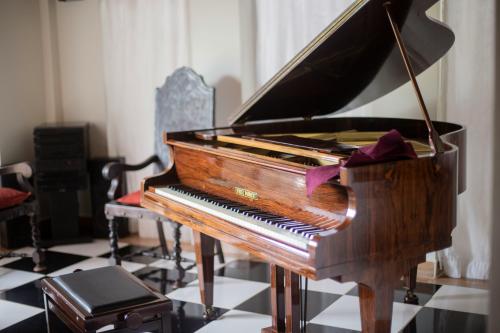How to Move a Piano

Planning Your Piano Move
Moving a piano requires meticulous planning. The instrument's size and weight can pose significant challenges. Start by measuring your piano.While you can attempt a DIY move, hiring a professional piano moving service offers several benefits. These services have the expertise and equipment to move your piano safely, minimizing the risk of damage or injury.
This helps in understanding the best way to navigate through doors and hallways. Also, evaluate the new location to ensure the piano fits well without obstructions.
Gather the Right Equipment
The success of your piano move hinges on using the right tools. You'll need a piano dolly, straps, and a moving blanket. A dolly helps in transporting the piano smoothly. Straps secure the piano in place, preventing it from shifting during the move. Moving blankets protect the piano from scratches and damage.
Prepare the Piano for Moving
Before moving, make sure to secure the piano's lid and keys. Lock the lid if possible. If not, wrap it tightly with a moving blanket and secure it with tape. Protect the keys by placing a blanket or cloth over them and securing it. This prevents any accidental damage during transit.
Clear the Pathway
Ensure a clear and safe path from the piano’s current location to the moving vehicle. Remove any obstacles, rugs, or furniture that could cause accidents. Measure doorways and hallways to ensure the piano can pass through without issues. This step minimizes the risk of damaging the piano or your property.
Lift and Load with Care
When lifting the piano, always use proper techniques to avoid injury. Bend your knees, not your back, and use your legs to lift. If the piano is upright, place it on the dolly carefully. For grand pianos, consider disassembling the legs and pedals. Secure the piano on the dolly with straps to prevent any movement during transportation.
Transport the Piano Safely
Load the piano into the moving truck with care. Position it against a wall to keep it stable. Secure it with additional straps to avoid any shifting during the drive. Make sure the truck is parked on a level surface to prevent the piano from rolling.
Unload and Place the Piano
Upon arrival, unload the piano using the same careful methods. Ensure the new space is ready and the path is clear. Position the piano in its new spot and remove the blankets and straps. Reassemble any parts if needed, such as legs or pedals for grand pianos.
Final Checks and Tuning
After moving the piano, check for any damages. Test the keys and pedals to ensure they work correctly. It's advisable to have a professional tuner check the piano once it's settled. Moving can affect the tuning, so a professional adjustment ensures it sounds perfect again.
Post Your Ad Here
Comments